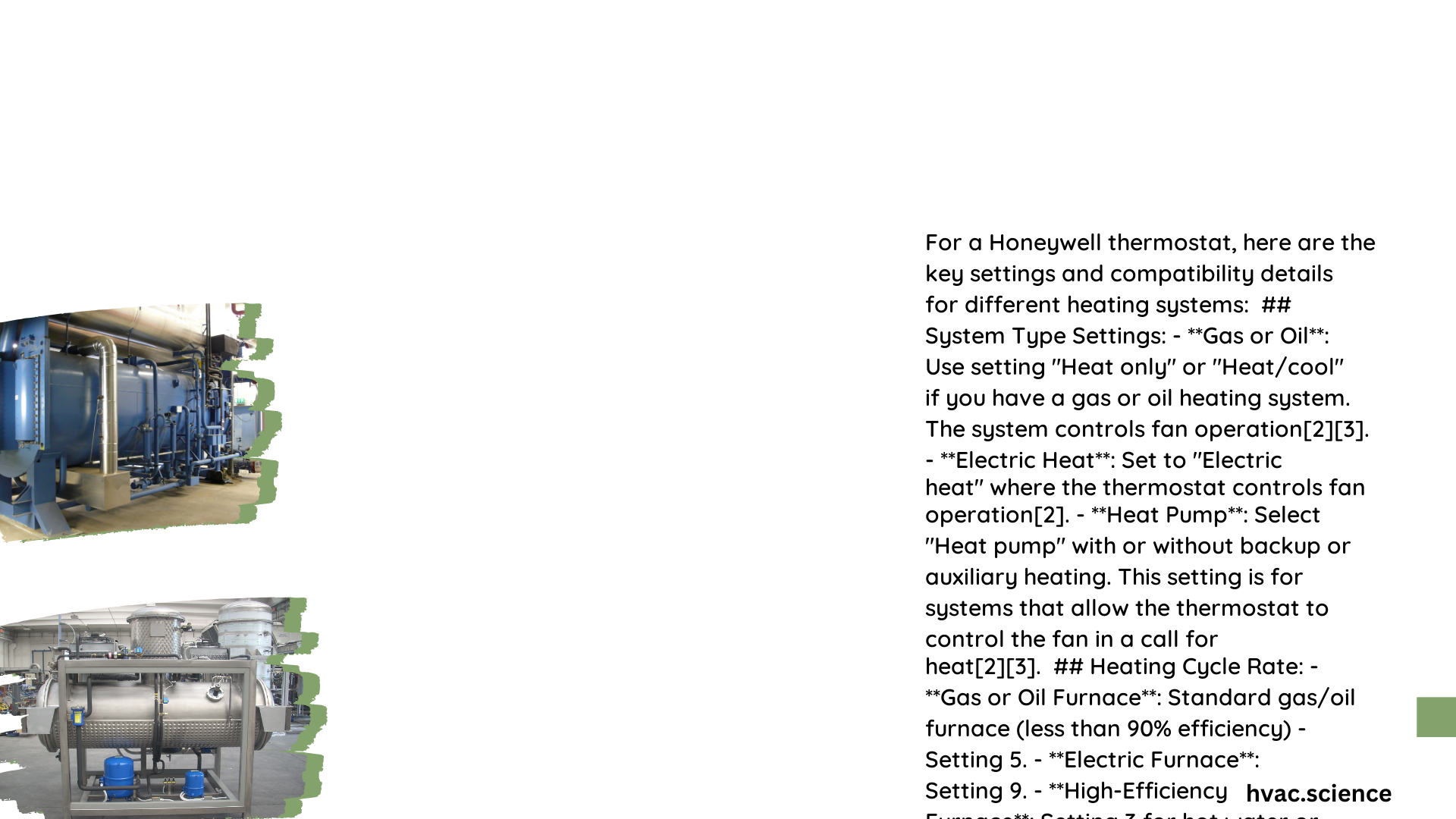Honeywell thermostats are versatile devices compatible with various heating and cooling systems, including electric heat pumps and gas/oil systems. These thermostats offer advanced features for temperature control, energy savings, and smart home integration. Honeywell’s range includes models like the T3, T4, T5, and T9 series, each designed to work efficiently with heat pumps and traditional HVAC systems, providing users with precise control and potential energy savings.
What are the key features of Honeywell thermostats for electric heat pumps?
Honeywell thermostats designed for electric heat pumps offer a range of features to enhance comfort and efficiency:
- Multi-stage heating and cooling support
- Programmable schedules
- Smart home integration
- Energy-saving algorithms
- Remote access via mobile apps
These features allow users to optimize their heat pump performance while potentially reducing energy consumption.
Which Honeywell thermostat models are compatible with heat pumps and gas/oil systems?

Several Honeywell thermostat models are compatible with both heat pumps and gas/oil systems:
- Honeywell Home T3: Programmable thermostat compatible with heat pumps and boiler technology
- TH4210U2002 and TH4110U2005: Support up to 2 stages of heat and 2 stages of cool for heat pumps
- Honeywell Wi-Fi Thermostats (T5, T9): Compatible with heat pumps up to 4 stages of heat and two stages of cool
These models offer flexibility for various HVAC configurations, including systems with auxiliary or backup heat.
How do you install a Honeywell thermostat for an electric heat pump?
Installing a Honeywell thermostat for an electric heat pump involves the following steps:
- Turn off power to the HVAC system
- Remove the old thermostat
- Label and disconnect the wires
- Mount the new Honeywell thermostat base
- Connect the wires to the appropriate terminals
- Attach the thermostat to the base
- Restore power and configure the thermostat
Here’s a general wiring guide for Honeywell thermostats with heat pumps:
| Terminal | Function |
|---|---|
| R | Power |
| C | Common wire |
| W/W1 | Heat (stage 1) |
| W2 | Auxiliary heat |
| Y/Y1 | Compressor (stage 1) |
| Y2 | Compressor (stage 2) |
| O/B | Reversing valve |
| G | Fan |
Always refer to the specific model’s installation guide for accurate wiring instructions.
What are the energy-saving features of Honeywell thermostats for heat pumps?
Honeywell thermostats offer several energy-saving features for heat pump systems:
-
Adaptive Recovery: This feature learns how long it takes to reach desired temperatures and starts heating or cooling in advance.
-
Geofencing: Some models use your smartphone’s location to adjust temperatures when you’re away or returning home.
-
Smart Scheduling: Programmable schedules allow you to set different temperatures for various times of the day and week.
-
Heat Pump Balance: This feature optimizes the use of auxiliary heat to maximize efficiency.
-
Energy Reports: Many Wi-Fi enabled models provide energy usage reports to help you identify savings opportunities.
These features can lead to significant energy savings, potentially reducing heating and cooling costs by up to 30-40% when used effectively.
How do Honeywell thermostats optimize heat pump performance?
Honeywell thermostats employ several strategies to optimize heat pump performance:
-
Cycle Rate Control: Adjusts how often the system turns on and off to maintain comfort and efficiency.
-
Minimum On/Off Time: Prevents short cycling, which can reduce system efficiency and lifespan.
-
Auxiliary Heat Management: Intelligently controls when auxiliary heat is engaged to minimize energy use.
-
Adaptive Intelligent Recovery: Learns your home’s heating and cooling patterns to reach desired temperatures efficiently.
-
Humidity Control: Some models factor in humidity levels to optimize comfort and efficiency.
By fine-tuning these parameters, Honeywell thermostats can significantly improve the overall performance and efficiency of electric heat pump systems.
What are the compatibility considerations for gas and oil systems?
While many Honeywell thermostats are designed primarily for heat pump systems, they often maintain compatibility with gas and oil heating systems. Here are some key considerations:
-
Wiring Differences: Gas and oil systems typically use different wiring configurations compared to heat pumps. Ensure your chosen model supports your specific system.
-
Single vs. Multi-Stage: Check if your gas or oil system is single-stage or multi-stage, and select a thermostat that supports the appropriate number of stages.
-
C-Wire Requirement: Many advanced features require a C-wire for constant power. This is more commonly available in newer HVAC systems.
-
Boiler Systems: Some Honeywell models, like the T3, are specifically compatible with boiler technology used in some gas and oil systems.
Always verify the specific compatibility of your chosen Honeywell thermostat with your gas or oil system before installation.
How do you troubleshoot common issues with Honeywell thermostats on heat pump systems?
If you encounter issues with your Honeywell thermostat on a heat pump system, try these troubleshooting steps:
-
Check Power: Ensure the thermostat has power. If it’s battery-operated, try replacing the batteries.
-
Verify Wiring: Double-check that all wires are securely connected to the correct terminals.
-
Confirm Settings: Make sure the thermostat is set to ‘Heat’ mode for heating and ‘Cool’ for cooling.
-
Check Air Filter: A dirty air filter can reduce system efficiency. Replace if necessary.
-
Calibrate Temperature: Use an accurate thermometer to check if the displayed temperature is correct. Calibrate if needed.
-
Reset the Thermostat: Perform a factory reset if persistent issues occur, but note this will erase all programmed settings.
-
Update Firmware: For Wi-Fi models, ensure the thermostat’s firmware is up to date.
If problems persist after trying these steps, consult the user manual or contact Honeywell customer support for further assistance.
By understanding the features, installation process, and troubleshooting techniques for Honeywell thermostats with electric heat pumps and gas/oil systems, you can ensure optimal performance and energy efficiency in your home heating and cooling system.
